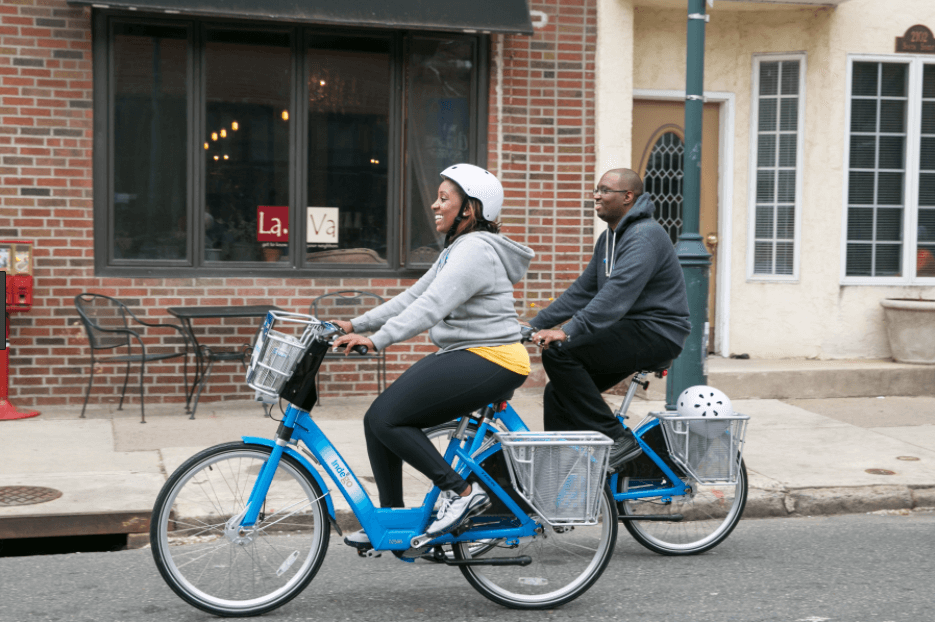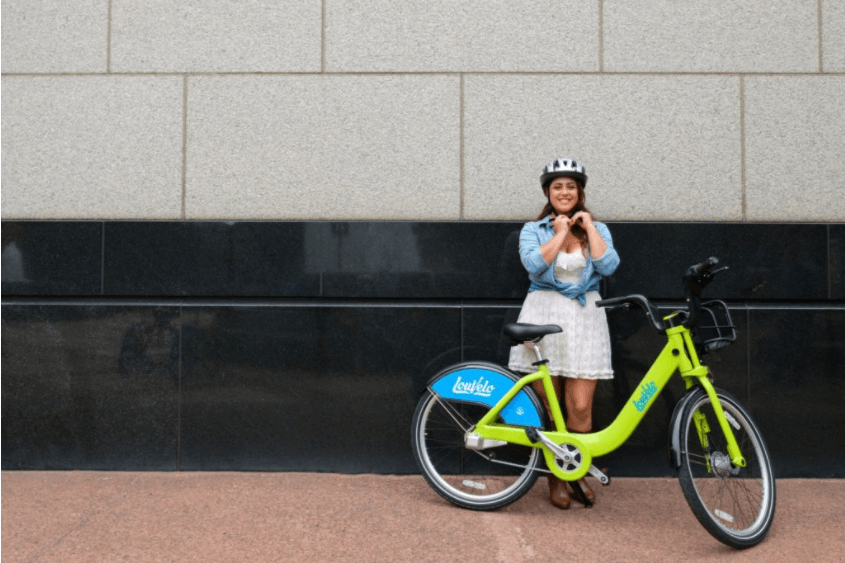Autumn Gear Guide
Find inspiration in our Gear Guide that will keep you out on your bike through wind or rain.
Download NowWith the rise of bike share new businesses have entered the market and a few of them deserve your attention.
More bikes, more businesses! With the rise of bike share a number of new businesses have entered the market and a lot of them have nobel intentions.

Nobel enough that we want to share them with you. While mainstream media has often portrayed bike share programs as a poor use of taxpayers money and a major nuisance we’re sure that deep down they know it’s a much needed transportation option. One that needs to be promoted as necessary to a cities make-up. You might want to point fingers at the dockless bike share companies as they crowd city streets but it’s important to understand that these companies are in their infancy. Like the internet was in the 1980’s. How far it’s come. If you still need to point fingers, fine, but below are a few companies you should be giving a thumbs up too.
If you work in the bike share industry we hope you will find this post incredibly useful. Whether you’re planning to launch a bike share in your city or already operating one you know there is a lot to consider. Don’t let the process overwhelm you though. There are resources that exist covering topics like how to start a bike share and ways in which you can improve your existing program. Companies and cities have been operating bike share programs for years and are thankfully willing to share what they have learned. After all, the name of the game is more butts on bikes.
We’ve compiled a list of a few organizations that are great resources for bike share programs, new and old, that want to make sure their set-up for long term success.
Better Bike Share:
While bike share is one of the most affordable transportation options in the city, the cost of a bike share membership can still be out of reach for many people. This means many low-income residents will continue to use public transit which has a low initial cost unlike a bike share membership where the initial fee is often considerably higher.
Setting up an equity program helps attract a diverse group of people and makes the program more accessible to those in need of an affordable transportation option. A bike share equity program should take into consideration low-income residents who don’t have a credit card, can’t fork out the membership fee, or may not able to afford the full liability of a lost or damaged bike.
If you’re interested in how you can set-up a bike share equity program a great resource is the Better Bike Share Partnership, a collaboration funded by The JPB Foundation to build equitable and replicable bike share programs. They aim to help cities and operators identify ways in which their system may not be taking into consideration underserved communities.
Just watch their video on How To Build A Thriving, Equitable Bike Share System: Lessons from the Better Bike Share Partnership
NABSA:
While bike share has been around, in some way, shape, or form since 1965, it is only recently that technology has allowed this industry to rapidly expand. While the bike share industry is still in its infancy there have been a lot of ups and downs. So how do you minimize the bumps that so many bike shares have experienced before you?
Enter the North American Bike Share Association (NABSA). Emerging out of the need for collaboration and knowledge sharing, NABSA brings together leaders in the industry and years of experience. Their aim is to support and enhance bike share across North America.
While you are required to be a member in order to access the resources and support that will assist you in the implementation of a bike share systems, it’s worth the fee. You’ll benefit from a knowledge share database, people that can help you plan, operate, and understand bike share, and webinars and events held every month.
NABSA recently created preliminary guidelines for dockless bike share regulation to help city officials and operators consider the key components that should be taken into consideration when creating dockless bike share regulation.

Philadelphia’s Indego bike share system
Shared-Use Mobility Center:
You’ve heard the saying ‘it takes a village to raise a child.’ Well, it takes a city to raise a bike share and it’s not always easy. While you may see bike share as the most important addition to your city’s transportation needs, officials and policy makers may not agree. There is a lot of pressure on them to consider all transportation options and bike share makes up just one piece of the puzzle.
One way to help showcase the importance of a bike share program is with data and policies that have been proven to work for cities in the past. The Shared-Use Mobility Center (SUMC) operates to do just that. They serve as a public interest organization working connect the shared mobility industry with transit agencies, cities and communities. SUMC gives you access to toolkits designed to help cities and public sector leaders better realize the benefits of share mobility. Having the research and data behind you will help make sure the decision makers are making the right choices.
SUMC also offers webinars, events and action plans. You won’t want to miss their upcoming National Shared Mobility Summit taking place in Chicago from March 12-14, 2018.
While the companies listed above are all based in North American focus don’t fret if you’re looking to set up systems in other parts of the world. These resources will be useful to you nonetheless and with a little digging you’ll find companies setup closer to home with the similar goals of supporting bike share programs. For example, Carplus Bikeplus, the UK representative body for bike sharing aims to optimize the benefits of cycling by supporting the emergence of the effective widespread availability of pooled bikes.

Louisville’s LouVelo bike share program
Funding:
While there is no single organization you can turn to for a wealth of information on how to secure funding, we can’t really leave this topic out. You won’t be able to operate a bike share without money behind the system.
To help bike share programs looking for sponsorship connect with companies wanting to sponsor a city’s bike share program, or vice versa, bikeshare.com launched a Media page. Here you can read about the benefits of sponsoring a bike share program and what can be done to make your program more attractive to a potential sponsor. Sponsors or those with sponsorship opportunities can fill in a form on our Media page indicating what they are looking for. If there is a match we will work to connect both parties.
Bike share systems have been funded many different ways and funding support can come from nonprofits, businesses, advocacy groups, government organizations, real estate organizations and universities. While sponsorship can depend on the city you are located in and the scale of the system, bike share programs are an amazing opportunity to reach active urban populations in a unique and compelling manner. This healthy and environmentally friendly form of sponsorship and advertising offers high visibility plus the correlative benefits of supporting a progressive transit system. Remind your potential sponsor of these benefits and it might be enough to convince them to provide the funding you’re after.
Grant funding is also possible at both the federal and local levels. The Federal Transit Administration provides flexible funding with the Congestion Mitigation and Air Quality Program (CMAQ) and STP Transportation Enhancements funds. On a smaller scale you can look into local R&D pilot funds and public health grants.
This post was originally published on bikeshare.com. Bikeshare.com is your one stop shop for everything bike share.
Bike share systems can find equipment and services while vendors and operators can showcase products and promote their services.
Find inspiration in our Gear Guide that will keep you out on your bike through wind or rain.
Download Now
Leave a comment